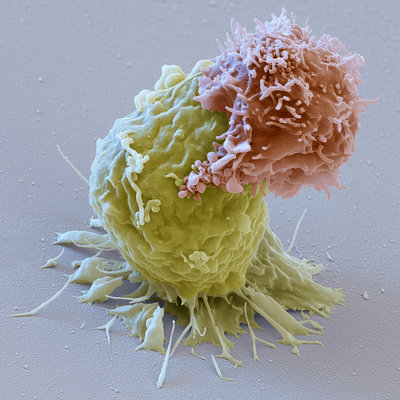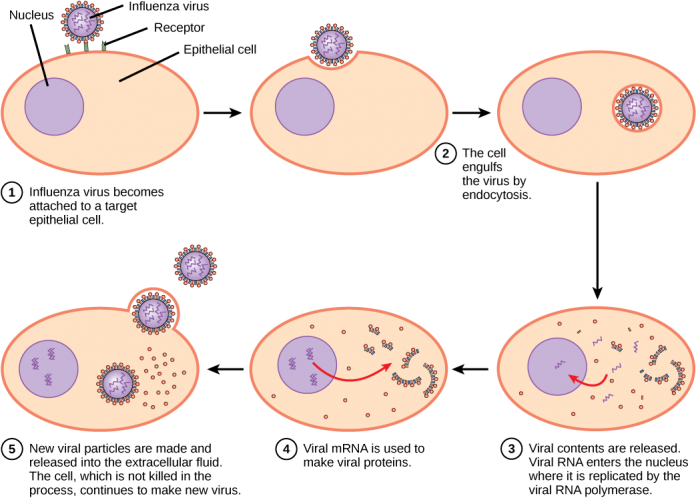Virus particles are too large to diffuse across the plasma membrane. Receptors are needed to get viruses into cells. Then, the genome can be transferred inside the cell. Only viruses of fungi, that have no extracellular phases; and viruses of plants, which enter cells by mechanical damage, don’t utilize receptors to enter the cells. One virus may bind one receptor, one virus may bind many receptors, or one receptor may bind many viruses.
The viral fusion into the membrane is catalyzed by viral proteins embedded into the membrane. A pore is formed between the cellular and virus membranes by hair pinning particles which bring the membranes close together with no other structures between them. Influenza viruses are brought into a clathrin coated vesicle, upon fusing with the cell. It then pinches off the membrane and moves along the microtubule network; the clathrin then comes off, and the influenza viruses burst out of the vesicle.
The nuclear pore can accomodate viruses up to a certain size. There’s a transport process that brings influenza virus through these pores into the nucleus of the cell. However, DNA viruses don’t fit through the nuclear pores. They are too big. Herpes virus docks onto the nuclear pore, and the DNA comes out through a portal in the Herpes virus. Adenoviruses are similar to Herpes Virus, in that they dock onto a nuclear pore; except Adenoviruses don’t have a portal. They dismantle so that the nucleic acids can get into the nucleus. Parvoviruses bind to the nuclear pores, and cause disruptions of the nuclear membrane. The Parvovirus then enter the nuclear membrane and release DNA into the nucleus.














































